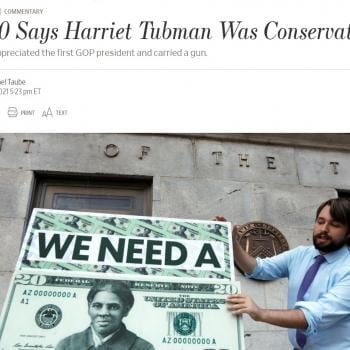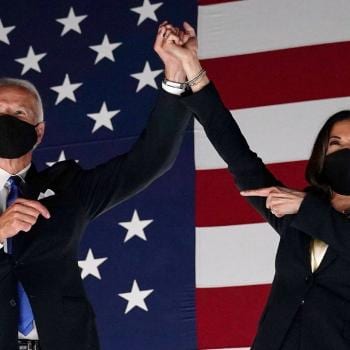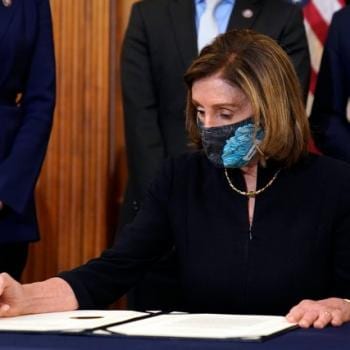I’ve often seen Islam treated as an odd case when it comes to willingness to engage in acts of terror or vigilante “justice”. I think it’s easy to view the West as having somehow moved beyond this, and our society as being wholly and completely different. It’s true that non-Muslims in the West don’t tend to carry out honor killings or call for the death penalty for apostates. There are definitely differences. But is it true that non-Muslims in Western countries are immune carrying out acts of terror and vigilante violence designed to intimidate or cow? No.
While the media may seem to suggest otherwise, Muslims don’t have a monopoly on terrorism. In the U.S., 94% of terrorist attacks between 1980 and 2005 were carried out by non-Muslims. Around 10% of Americans killed in political violence and mass shootings between 2001 and 2013 were victims of Muslim attacks—and that’s without counting the majority of the country’s mass shootings. Less than 1% of terrorist attacks in the European Union from 2006 to 2oo8 were Islamist in nature; most of the attacks were carried out by separatist groups.
Why am I saying all of this? Because I think we risk losing perspective every time the West experiences a major Islamic terrorist attack.
In the week after Christmas, there were three separate arson attacks against mosques in Sweden; one attack involved a bomb and injured five people. Three mosques in France have been attacked since the Charlie Hebdo murders, two with bombs and one with gunfire. Hate crimes against Muslims, including deaths, are too common for comfort in Western countries, and have been for years. It’s easy to talk about terrorist attacks carried out by Muslims in the West without considering that Muslims in the West are also subject to terrorist attacks carried at the hands of non-Muslims.
You may wonder why this matters. When Muslims carry out an act of terror against non-Muslims in the West, can’t we just talk about that and leave acts of intimidation that go the other way for another time? Well, no, for two reasons. First, this “other time” never seems to come, and as a result talking about Muslim violence without talking about violence against Muslims feeds popular misconceptions. Second, as the attacks on French mosques in the last few days make clear, discussion that focuses solely on Muslim violence all too often leads to violence against Muslims.
Hate crimes in the West are not just perpetrated against Muslims. There are also hate crimes against other racial groups and religions, and against LGBTQ individuals. The U.S. in particular has a long history of acts of terror and violence against people of color, and transgender people of color are especially vulnerable today. This violence isn’t limited to one side of the political spectrum, either. Last week someone detonated a bomb outside of NAACP headquarters in Colorado, and last year a man shot up the headquarters of the Family Research Council.
Some of the most deadly terrorist attacks in the West in the last two decades have been carried out by non-Muslims. This includes the 2011 massacre of children at a Norway youth camp (carried out by a man with Christian motivations) and the 1995 Oklahoma City bombing, which was motivated by anti-government sentiment and took 168 lives. And then, of course, there are mass shootings like that of Adam Lanza, or the Batman theater shooting. Did you know that many Muslim-majority countries have significantly lower murder rates than the U.S.?
The U.S. is also home to a specific kind of systematized violence and intimidation based on religious convictions. In 2009, Dr. George Tiller was shot and killed by an anti-abortion activist. His crime? He performed abortions. Drs. Barnett Slepian, John Britton, James Barrett, and David Gun were all killed by anti-abortion activists over the past two decades, as were Shannon Lowney, Lee Ann Nichols, and Robert Sanderson, all of whom worked at abortion clinics. This is in addition to a significant number of attempted murders and even more arson attempts on abortion clinics.
And we, too, have religious leaders who provoke attacks like this with their rhetoric.
Have a look at this description of life as an abortion doctor:
Clara tried on a few options before narrowing them down. At first, she considered wrapping herself in a burka, which hid her hair without obstructing her eyes. But something about dressing in others’ cultural garb made her hesitant. Next, she slipped on a Sarah Palin mask, but quickly nixed the idea. “I don’t want to promote Sarah Palin in any way,” she says.
At last, the clerk handed her a flaccid, pale man’s face with deep-set eyes and a receding curly red hairline. It was Larry from The Three Stooges. Clara tucked her mane into her coat and then slipped the mask over her head.
She looked in the mirror and didn’t see herself at all. For a comedian, Larry is awfully creepy, she thought.
A week later, Clara was back in the South, only that time, as she drove past the protesters into the lot, she looked them right in the eyes. One by one, their cell phones snapped photos of Larry Fine.
It’s the end of a recent workday in the South. As Clara, mask-clad, walks out to her car, she hears something unexpected from one of the protesters.
“God doesn’t have that much patience, Dr. Taylor.”
They know her name.
Luckily, the mask doesn’t betray the shock on her face. She tries to ignore it, but she can’t shake the dread. “To have someone say your name—oh, it gave me the willies,” she says.
Back in the perceived safety of her hotel room, the landline rings. On the other end of the line, Clara hears a man’s voice. “How many babies did you kill today, Dr. Taylor?”
In many cases this violence has been systematic. Abortion doctors’ homes are staked out, their phones are called incessantly, and “wanted” papers are created. This campaign of intimidation and violence has forced many doctors out of the profession, and has required many abortion clinics to think like military installations.
Acts of terror, vigilante “justice”, and hate are wrong wherever they occur—whether they are perpetrated against Charlie Hebro, an abortion clinic, or a mosque. I am not suggesting that there are no differences—I find belief in honor killings and the death penalty for apostasy far too high for comfort in many Muslim-majority countries (much like I find approval of torture far to high in the U.S.). I am simply pointing out that the common narrative that intimidating or killing those with whom one has a grievance is a Muslim thing is only possible to maintain if we ignore similar acts carried out by non-Muslims. It’s not that simple.
We need to be able to call out and oppose violence and intimidation without unfairly stigmatizing populations that, in the West, frequently face violence and intimidation themselves. We need to remember the many Muslims who, like Ahmed Merabet, are willing to fight alongside us in opposing violence and intimidation—and the many Muslims, both in the West and elsewhere, who are victims of acts of violence and intimidation themselves. Even so, ISIS is an evil organization carrying out crimes to horrible to think about, but our best allies in fighting ISIS are Muslims as well.
This has to not be about the West versus Islam.














